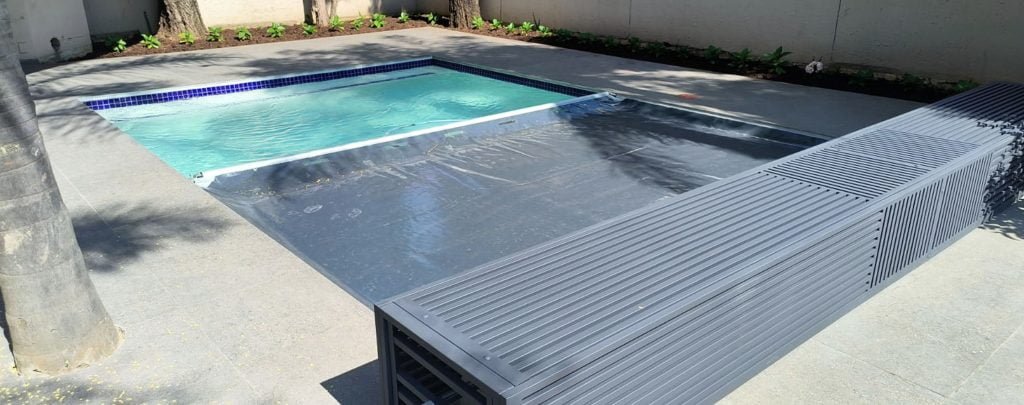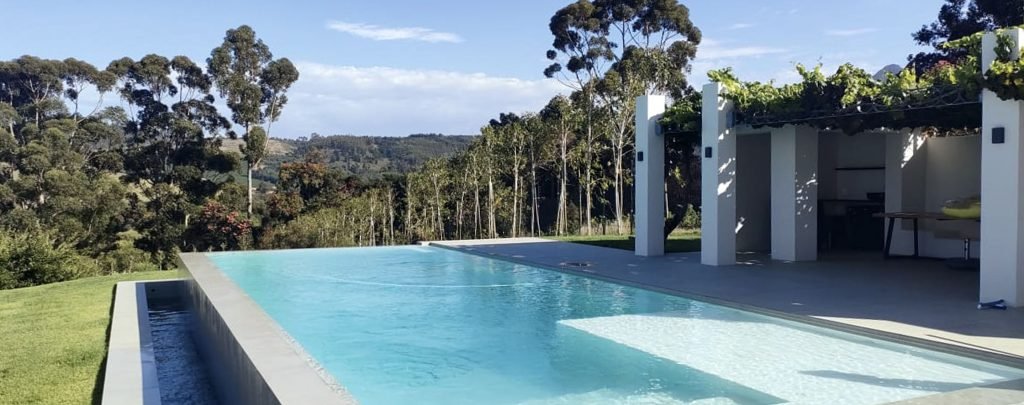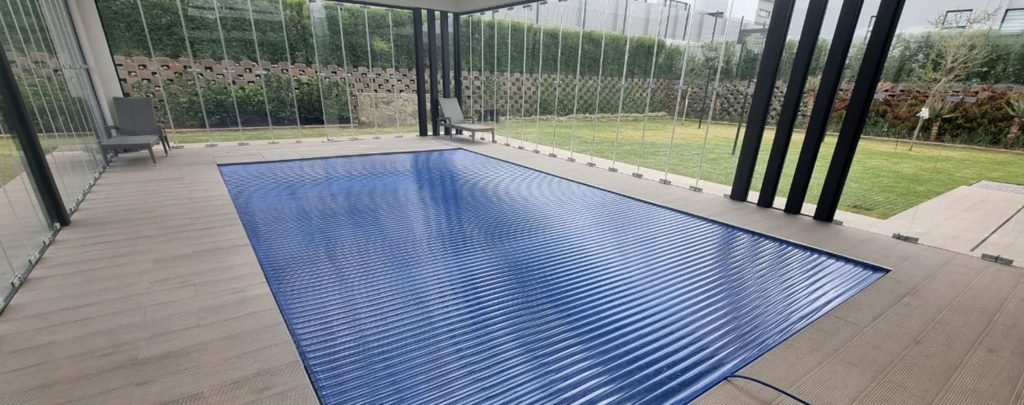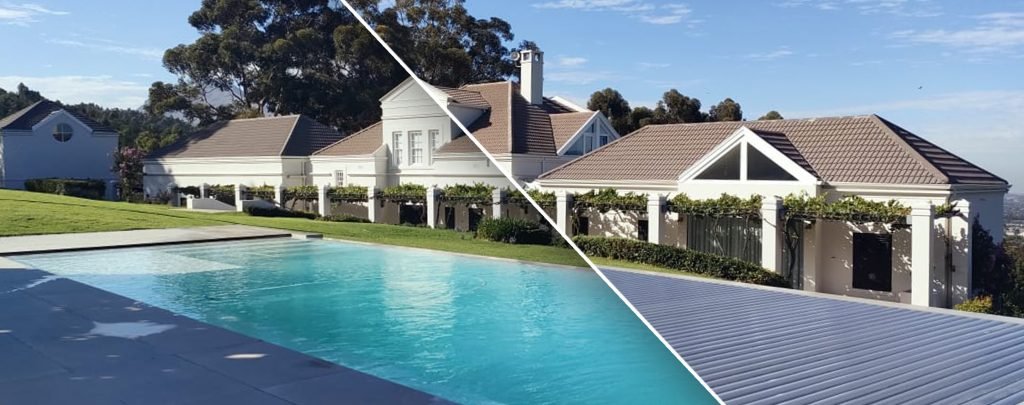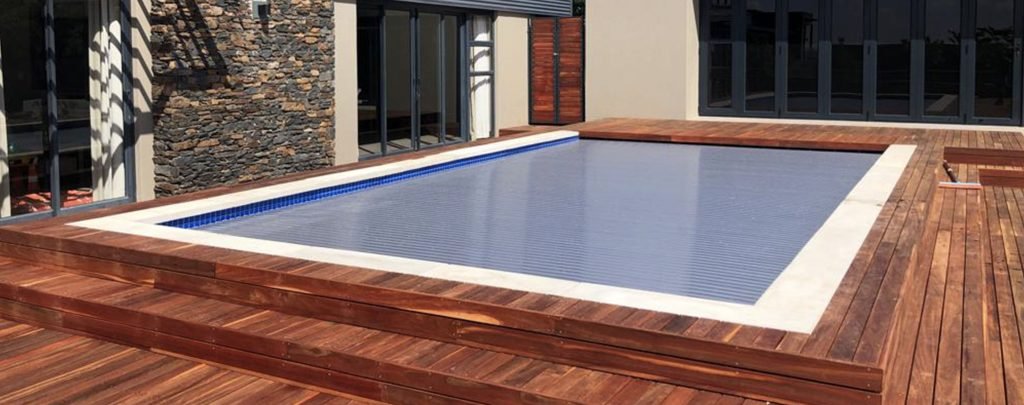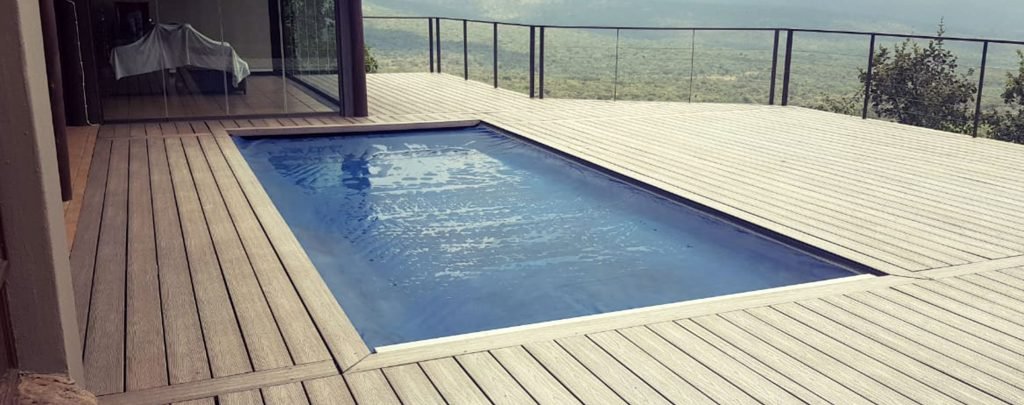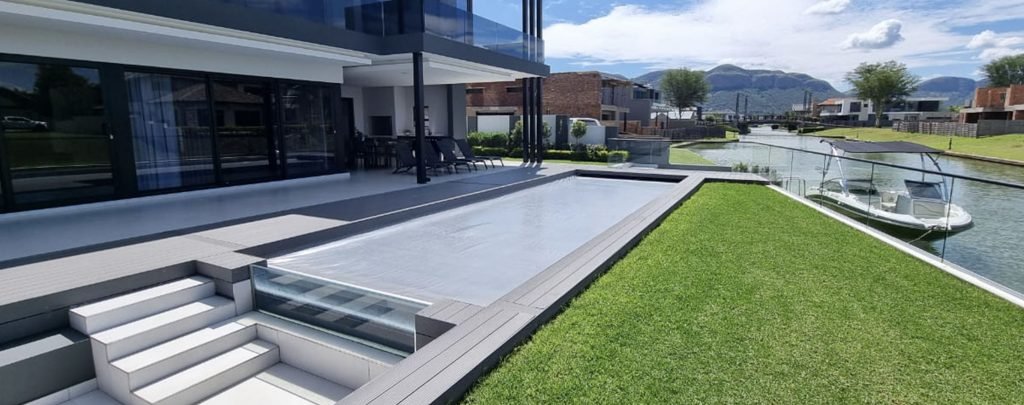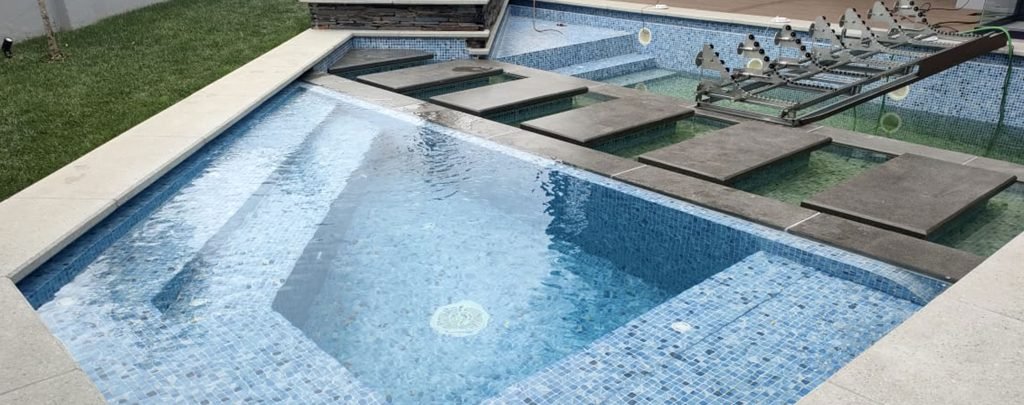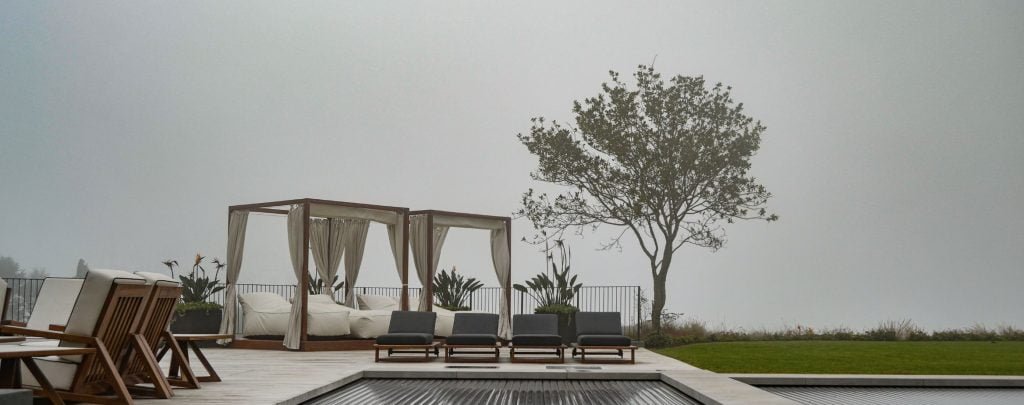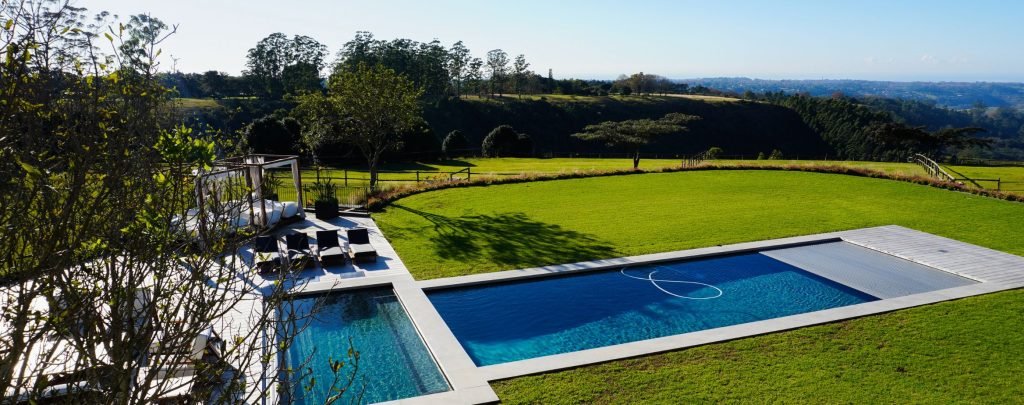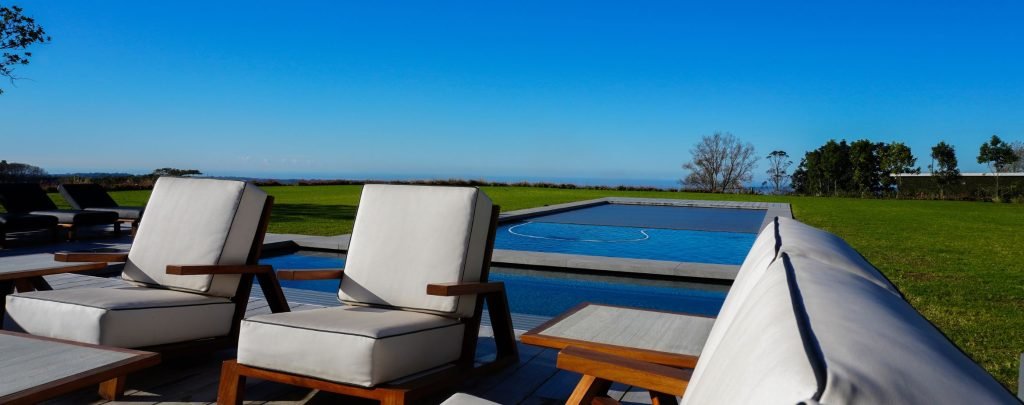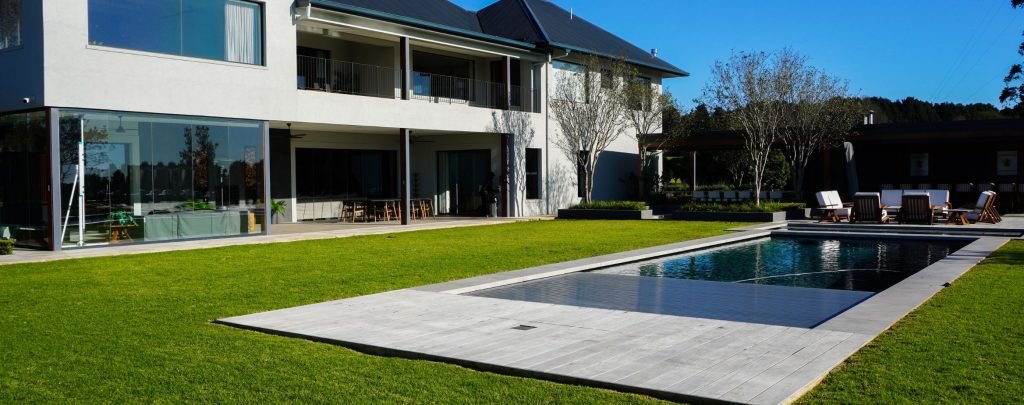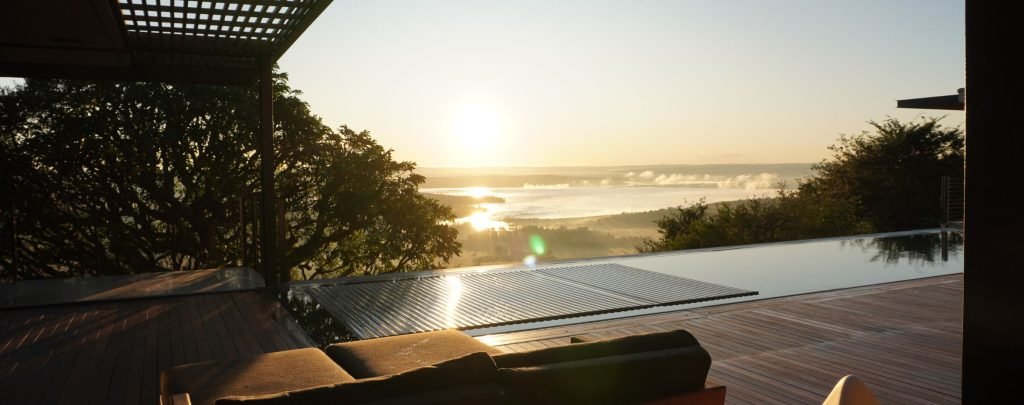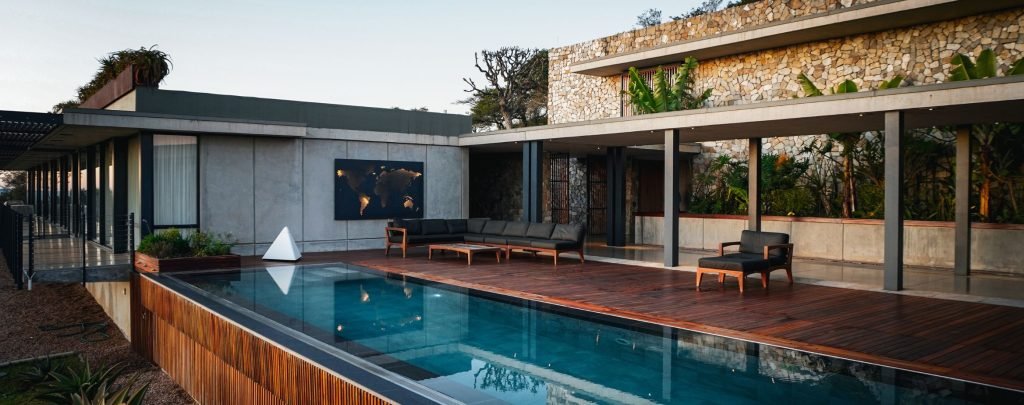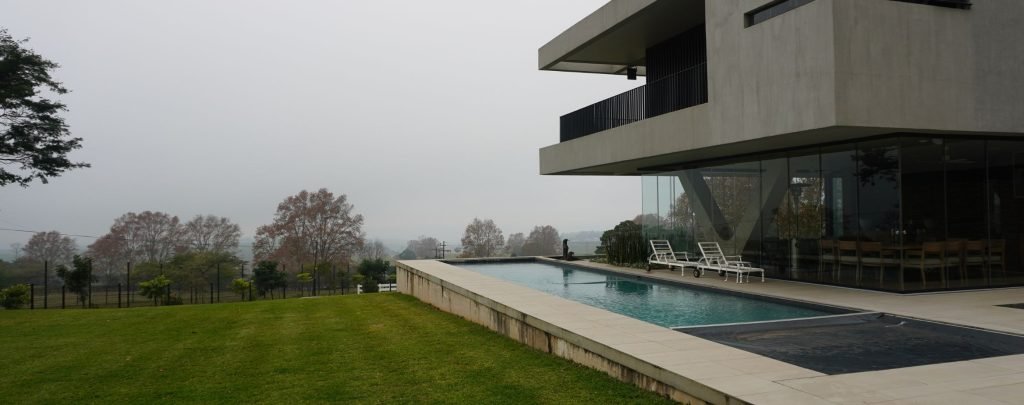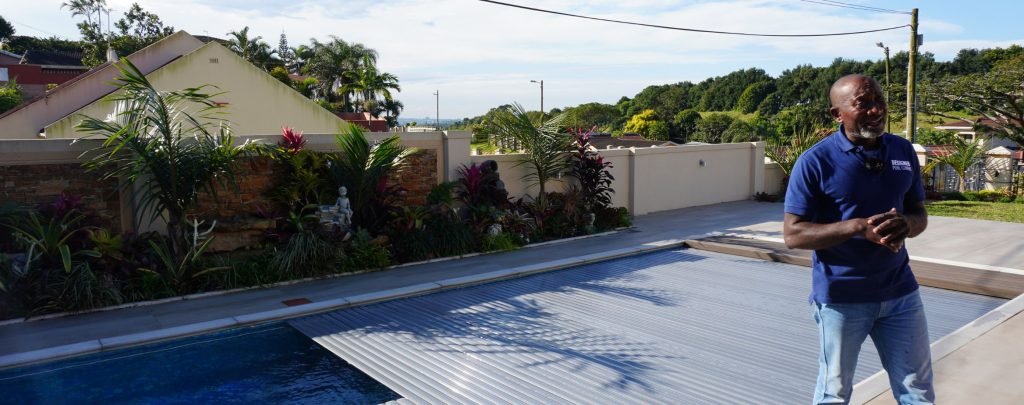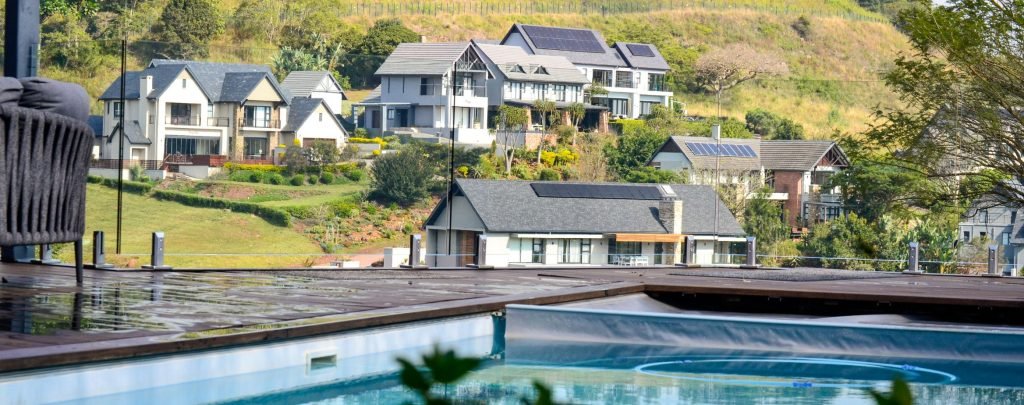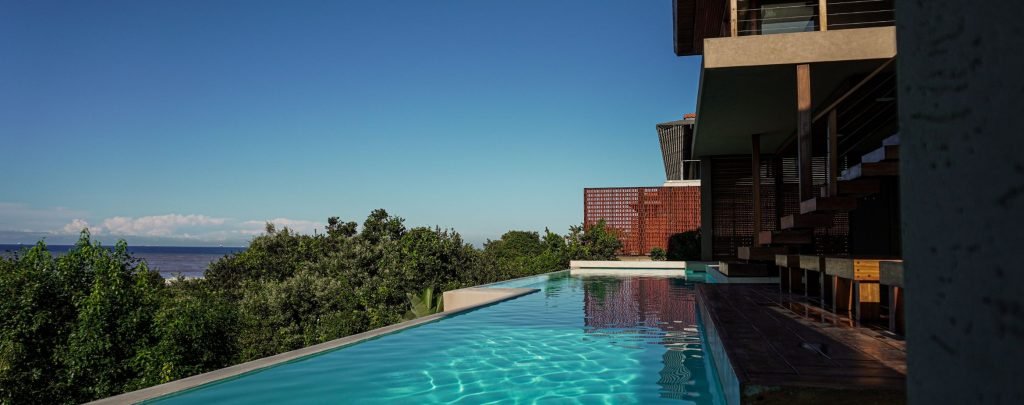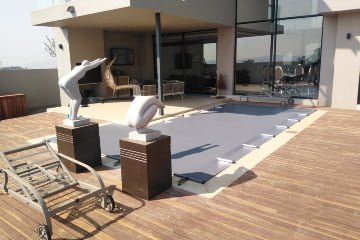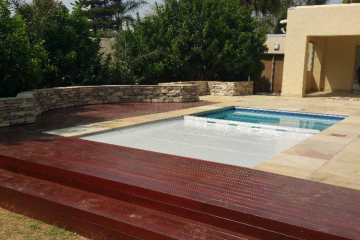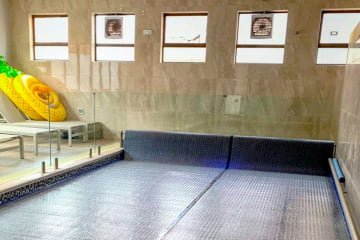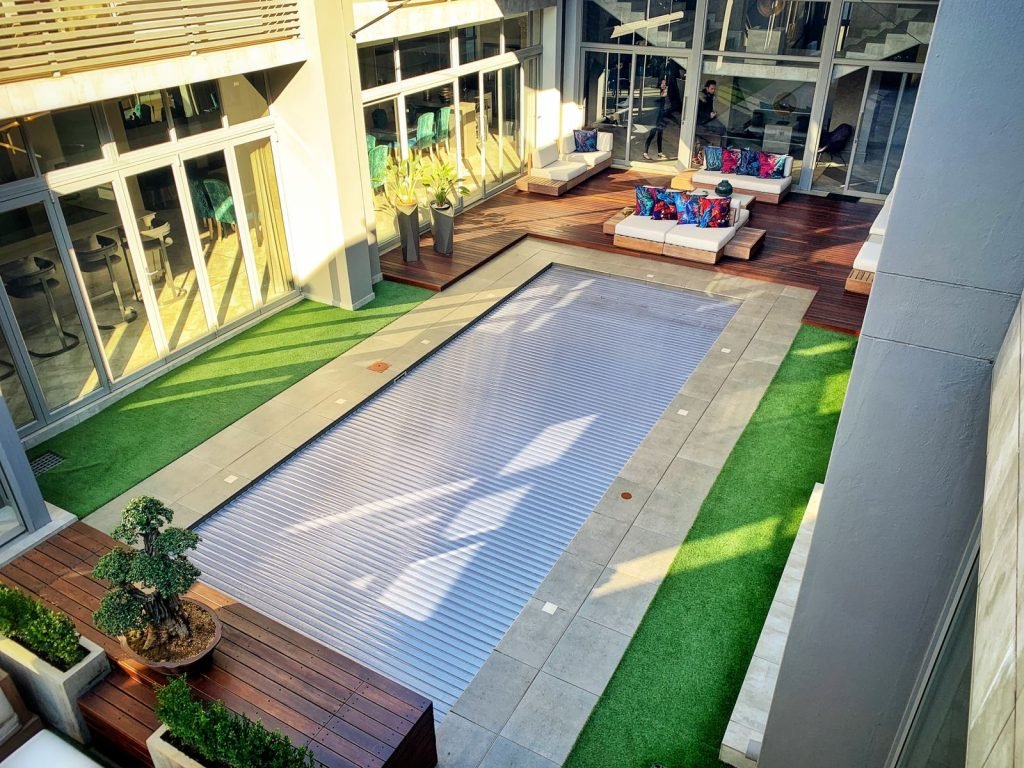
Designer Pool Covers KZN
What we do
Designer Pool Covers Durban is a company that specializes in selling and installing pool covers. For over 10 years, their products have been the trendsetters and industry leaders in the supply and installation of automatic and manual pool covers in South Africa.
The pool covers are manufactured with high-quality materials to ensure safety for children or pets who may venture into a backyard swimming pool.
Their customers include homeowners, builders, designers, architects, and engineers as well as commercial establishments such as hotels and resorts.
Why choose us
Designer Pool Covers Durban is the leading company in South Africa for pool cover systems. With over 10 years experience and industry leaders, Designer Pool Covers Durban offers their customers an automatic or manual swimming pool cover system to meet all of their needs. The company has grown exponentially due to customer satisfaction and repeat business.

Service process
Schedule an appointment
Work process
Payment process

About us
What we offer our clients:
- Performance and reliability
- Professional technical assistance to clients, architects, and builders
- On-site face to face customer service
- Customer after-sales support
- International standards and trends
- The most exclusive range of pool cover products
POOL COVERS FAQ
Pool covers
How do I choose a pool cover?
Selecting the Right pool cover is essential for many reasons. You can use the following measures to choose your pool cover:
a. Consider the type and material of pool covers.
b. Think about the dimensions and shape of your swimming pool.
c. Consider Safety features, Maintenance requirements, and the Ease-of-use.
d. Determine your budget and compare the prices of different options.
e. Read reviews and seek recommendations from a professional pool cover company.
What are the benefits of a pool cover?
A pool cover offers many benefits. Here are some of them:
Safety
Prevents accidental drowning, and pool injuries
Durability
Protects your swimming pool from harsh weather conditions
Aesthetics
Enhances the appearance of your swimming pool area
Energy Efficiency
Reduces Heat loss, minimizes water Evaporation, and lowers Energy consumption
Cleanliness
Maintains your swimming pool clean and lowers the pool Maintenance cost
UV Protection
Protects your pool cover against harmful sunlight rays
Algae Growth Prevention
Prevents the growth of Algae by blocking the UV rays
Extended Swimming Season
Retains heat inside the pool & extends the swimming season
How many years should a pool cover last?
The lifespan of a Swimming pool cover varies depending on many factors, including its type, material, maintenance level, and environmental conditions.
However, an average quality pool cover should last 5 to 15 years.
And a high-quality pool cover should have a longer lifespan of up to 15-20 years.
In addition, it is essential to follow the maintenance instructions of the manufacturer company to maximize the lifespan of your pool cover.
What is the best pool cover to stop evaporation?
The best pool cover to stop evaporation is the Solid Pool Cover.
These covers get made of Vinyl or Polyethylene material. These substances build a physical barrier on the Pool cover surface and reduce water evaporation.
By sealing the pool cover surface, the Solid Pool Covers prevent the loss of water & reduce the need for frequent refilling. Additionally, installation techniques and the maintenance of pool covers also matter to minimize water evaporation.
Are pool safety covers worth it?
Yes, Pool Safety Covers are worth it because they offer several benefits. These covers guarantee pet & child safety, keep your pool clean, reduce the cost of maintenance, preserve energy & water, and enhance the aesthetics of your property.
While these covers require a high upfront investment compared to other pool covers, they offer merits in terms of safety, cleanliness, compliance, and energy efficiency, making them a worthwhile investment for all pool owners.
What are swimming pool covers made of?
Swimming Pool Covers can get made of different materials depending on their characteristics and purpose. However, here are some common materials used in the swimming pool covers:
Vinyl
Vinyl pool cover material is durable, lightweight, and UV resistant. It can be in solid or mesh form, depending on the purpose of the pool cover.
Polyethylene
Polyethylene pool cover material is strong, waterproof, and provides optimum insulation. It can also be in solid or mesh form.
Polyvinyl Chloride (PVC)
PVC material retains heat and is resistant to sunlight and chemicals. This material gets used in the making of Solar Covers.
Mesh
This material is composed of woven polypropylene or similar materials. It is lightweight, well-ventilated, strong, and allows water to pass through while keeping the debris out.
Polycarbonate
This material is durable and impact resistant. It traps heat and minimizes water evaporation. It mostly gets used in thermal or solar covers.
Other Materials
Some other materials used in swimming pool covers include Fiberglass, Aluminum, Geotextile, Composite, and Bubble Material.
So, different pool cover materials have varying properties and combinations to achieve specific functions like safety, heat retention, or debris protection. The final choice depends on your preferences, intended use, budget, and climate.
Why do pool covers have holes?
Swimming Pool Covers may have holes or perforations for the following reasons:
a. Draining the excessive water.
b. Filtering debris and large particles.
c. Air Ventilation.
d. Preventing accidental drowning due to accumulated water.
How do you size a pool cover?
You can use the following steps to size a pool cover:
a. Determine the type of your pool cover.
b. Measure the dimensions of your pool at its widest points. For rectangular & square pools, measure from one to the opposite side.
And for the freeform or irregular pools, measure the lengthiest length & the widest width.
c. Add the overhanging measurements – if you want to extend the pool cover beyond pool edges.
d. Measure the radius if your pool has rounded corners.
e. If your pool cover has any obstacles in or around, measure the pool edges to these obstacles to ensure your cover will accommodate them.
f. Follow the instruction manual provided by the pool cover Manufacturing company. Click here to read out Pool cover size Measurement Guide
Can I use 2 pool covers?
Generally, there are no benefits of using two pool covers simultaneously because of impacts like reduced effectiveness, compromised fit, and safety hazards.
But there are some situations in which you can use 2 pool covers. Here are a few of them:
Winter Pool Protection
During winter, you can use a combination of solid and safe pool covers. The solid pool cover retains heat and keeps the pool clean.
While the safety cover – adds an extra barrier and prevents pool accidents.
Heat Retention and Minimizing Evaporation
To achieve maximum Heat retention and Minimum Water Evaporation – you can use a combination of a solar and solid pool cover. The solid pool cover acts as a barrier to minimize evaporation. On the other hand, the solar pool cover enhances heat absorption and retention.
Custom Covering
If you have a freeform pool or specific requirements, you can use two smaller covers that overlap or complement each other to provide a better-tailored coverage fit for your swimming pool.
How are pool covers attached?
Pool covers can be attached to the swimming pools in various ways, depending on the type & design of the pool cover and their specific installation methods. Here are some of the most common attachment methods:
Anchor System
This system gets used in Safety pool covers. Anchors are installed around the perimeter of your swimming pool and embedded in the pool deck or surrounding area.
And the cover is attached to these anchors with the help of straps or strings to create a secure fit.
Track System
Automatic pool covers to use this attachment system. Tracks get installed on either side of your pool, and the cover is attached to these tracks.
This system may have rolls and slides along the tracks to ensure easy opening and closing.
Rope and Winch System
In this system, a rope gets installed around the perimeter of your swimming pool. The Pool cover attaches to it and gets tightened using a winch to achieve a snug fit.
Other systems
Some other attachment systems for your pool covers include fastening mechanisms such as buckles, clips, and hooks.
Additionally, bungee cords, and elastic straps with hooks, are also used as attachment systems for various pool covers.
Does a pool cover cause algae?
No, Pool covers, when used and maintained appropriately – do not cause algae growth in your swimming pool. In fact, these covers can help prevent algae growth by blocking UV rays, which are essential for survival.
However, if you leave your pool covers unchecked and neglect them, they can create conditions encouraging algae growth.
And to prevent this, you can practice good maintenance habits like the following:
a. Using pool covers correctly and consistently
b. Maintaining proper water circulation and filtration
c. Maintaining optimum water chemistry and sanitation level
d. Cleaning the pool covers regularly
e. Brushing, skimming, and vacuuming the pool surface consistently
What’s the difference between a pool cover and a tarp?
Pool covers and tarps – both get used to cover swimming pools. However, there are many differences between these two options that are as follows:
Purpose
A pool cover gets designed to cover swimming pools. But tarps are multipurpose covers and can be used for purposes other than covering swimming pools.
Durability and Material
Pool covers get made of specific materials such as mesh, vinyl, or solid fabric. These materials protect your swimming pool against sunlight, Water Evaporation, and Weather conditions.
On the contrary, tarps get made of woven polyethylene or canvas material that quickly degrades when exposed to sunlight and pool chemicals. Plus, they may offer some level of water resistance but are generally not durable against harsh climatic conditions.
Fit and Installation
Pool covers have standard sizes or can get customized according to your swimming pool size and shape. Also, they have proper fastening and anchor systems to secure the attachment and installation.
On the other hand, tarps are available in a diverse range of sizes but may not get customized to your preferences. They do not have proper attachment systems for the pools, so they cannot fit perfectly with your swimming pool.
Longevity and Warranty
Pool covers usually have warranties that guarantee their durability and performance for a certain period. Also, they get designed to withstand environmental conditions so they last longer.
Alternatively, tarps are not long-lasting and offer no warranty for their performance & durability.
What kind of pool cover do I need?
Try the following tips to determine the kind of pool cover you need:
a. Determine the specific purpose of your pool cover. Do you want a safety cover, solar cover, winter cover, or a combination of all these options?
b. Measure the dimensions of your pool and consider its additional features.
c. Consider the climate and environmental conditions of your area.
d. Determine your budget and other preferences, such as the cover material, ease of use, color, and vice versa.
e. Research different pool cover options for your swimming pool and select the most appropriate option.
What happens if you don’t use a pool cover?
If you do not use a cover for your swimming pool, you may face the following challenges:
a. Increased Water Evaporation and the need for frequent refilling.
b. Rapid Heat loss and difficulty in maintaining water temperature for swimming.
c. Increased growth of algae requiring more chemical usage.
d. Debris accumulation that needs professional cleaning services.
e. Safety Hazards for pets and children.
What are the best colors for a pool cover?
The best color for a pool color depends on your preferences, specific requirements, and aesthetic sense. However, here are some of the best pool cover colors with their benefits:
Black and Blue
Offer high Heat absorption – the most beneficial colors for Solar Pool Covers.
Silver and Light Gray
Reflect more sunlight and heat – suitable for the Pools in warmer climates.
Light blue and Aqua
Create a balance of heat absorption and reflection – the best colors for areas having a Moderate temperature.
White
Reflect the most sunlight and heat – the most appropriate option for areas having hot climates.
Multi-colored and Patterned
Offer a combination of heat mechanisms, aesthetic appeal, and functional benefits.
How do you clean and store a pool cover?
Cleaning and storing a pool cover varies for its type, design, and specifications. However, here are some cleaning and storage steps you can follow:
Cleaning
a. Remove the debris.
b. Rinse with water and use a mild detergent.
c. Scrub the pool cover gently with a soft brush or broom.
d. Rinse it again and allow it to dry.
Storage
a. Clean the storage area.
b. Fold the cover neatly.
c. Place the folder cover in a spacious and breathable pool cover bag.
d. Store the pool cover in a cool and dry place. Plus, avoid keeping any sharp objects near it.
Should a pool cover touch the water?
Generally, it is unsuitable for a swimming pool cover to touch the pool water surface. Here are a few reasons:
a. If a pool cover gets submerged under water, it can contaminate it with pollutants. And results in high expenditure on maintenance and water treatment services.
b. Water contact can damage your Swimming pool cover and result in wear and tear. It affects the efficiency and lifespan of your pool cover.
Lastly, to ensure optimal performance for your pool cover, keep it afloat on the water surface without touching it. If you notice the pool cover touching the water surface, you should adjust it further to secure it in its place.
How much does a pool cover cost in South Africa?
The cost of a pool cover varies with many factors in South Africa, such as the type, size, brand, material, and additional features.
The average price of a simple swimming pool cover costs from R4000 to R10,000. And the covers with specialized features may cost you around R20,000 to R40,000.
Please note that these prices are approximate and vary based on many factors. So, we suggest you contact your local pool cover suppliers and retailers in South Africa to get the exact pricing or quotation.
You can contact us by clicking here!

